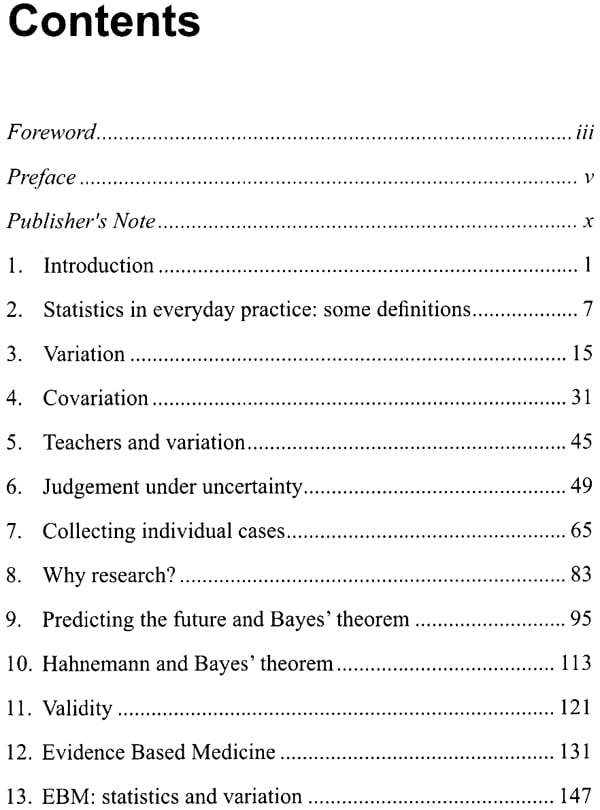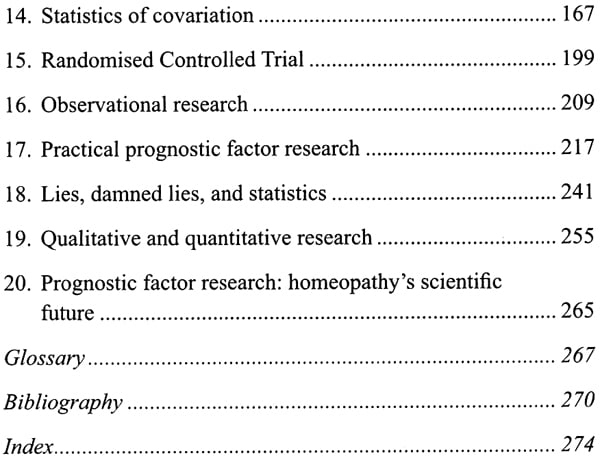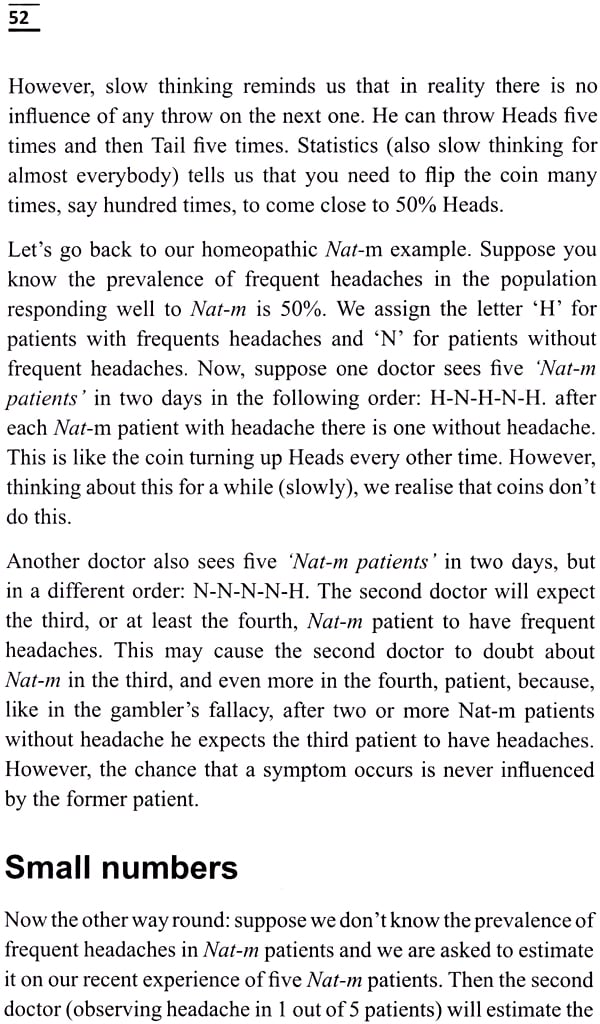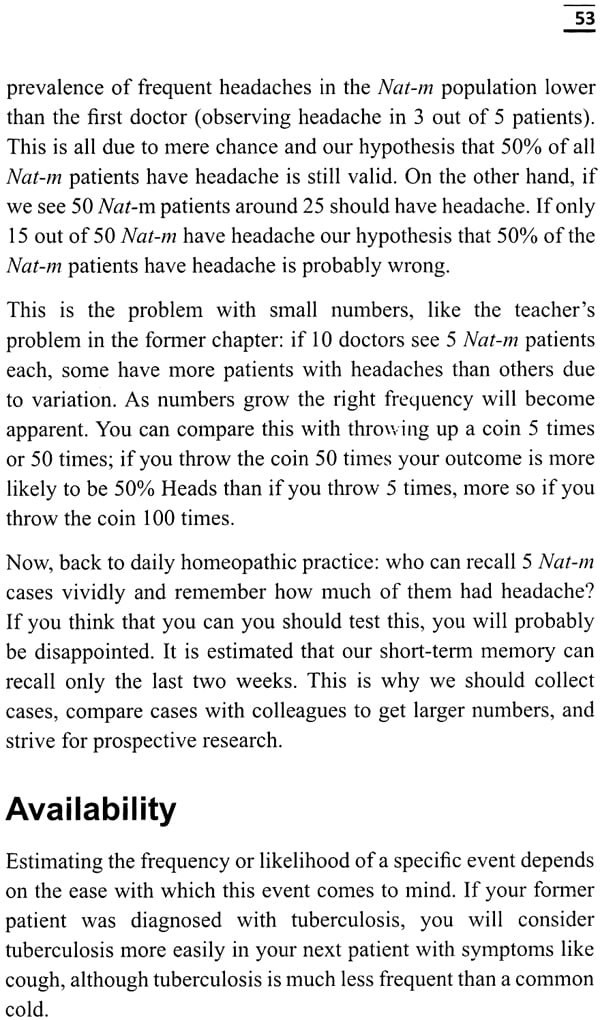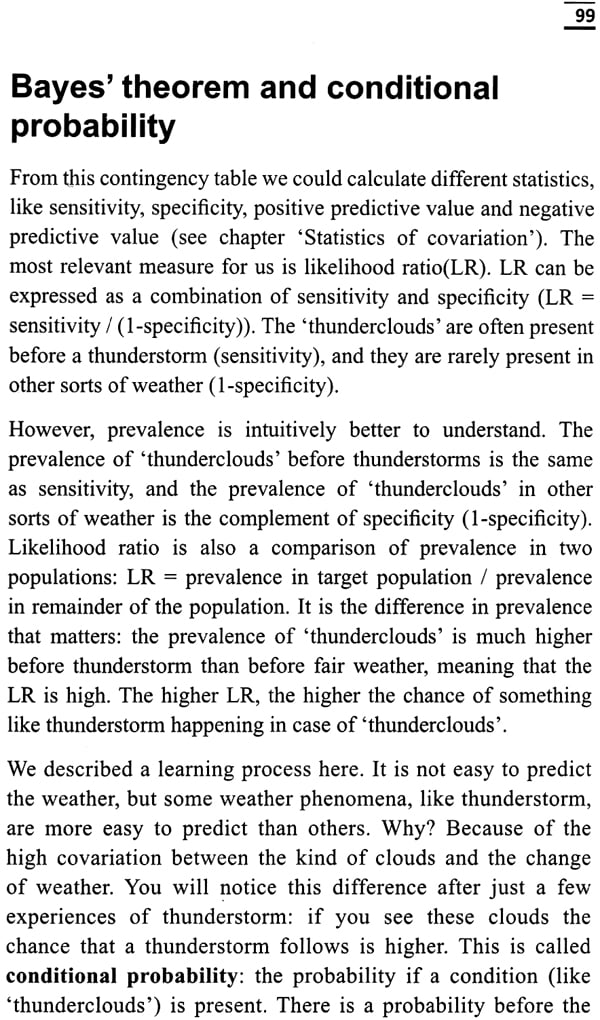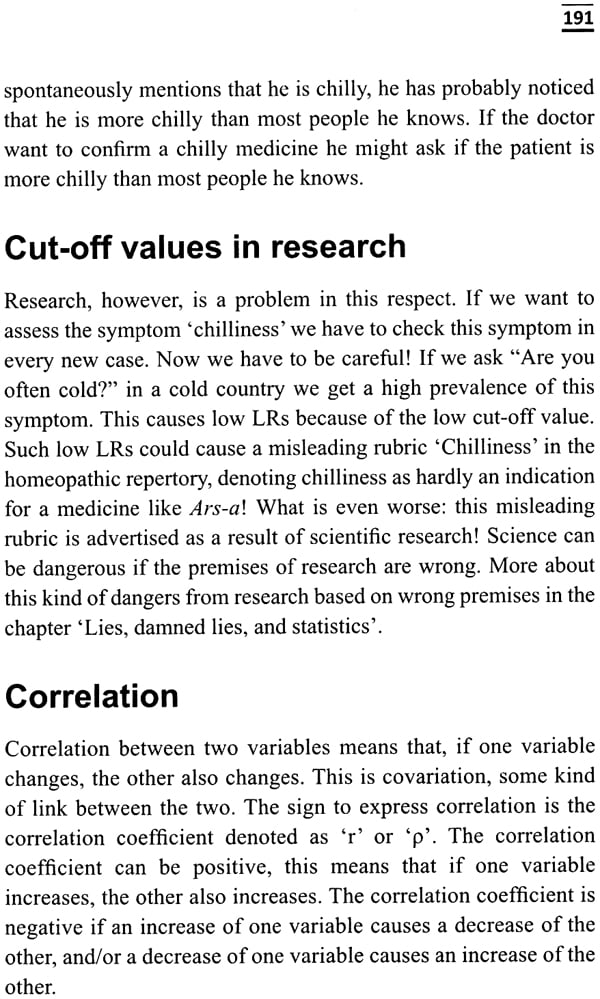
Fundamentals of Statistics and Clinical Research in Homoeopathy
Book Specification
| Item Code: | NAS510 |
| Author: | Dr Lex Rutten and Dr Martine Rutten |
| Publisher: | B. Jain Publishers (P) Ltd |
| Language: | English |
| Edition: | 2016 |
| ISBN: | 9788131937921 |
| Pages: | 288 |
| Cover: | PAPERBACK |
| Other Details | 8.50 X 5.50 inch |
| Weight | 360 gm |
Book Description
- Science can and should be applied to improve homeopathy.
- Using experience to choose the right homeopathic medicine can be expressed as a statistical algorithm. Hitherto there were no books explaining how statistics are involved in many medical decisions and how to assess practice experience, like the relationship between symptoms and beneficial effects of homeopathic medicines.
Dr Lex Rutten started as a general practitioner in conventional medicine in 1978, but soon became interested in homeopathy as an addition to conventional medicine. Studying statistics the author discovered Bayes' theorem as a real eye-opener: this is how experience works. He published dozens of scientific papers and teaches homeopathy and research in the Netherlands, India and Argentina. He developed a protocol for clinical research and organised the first prospective validation of symptoms in homeopathy.
Dr Martine is an assistant professor at Delft Technical University. Her PhD thesis was titled "Moisture in the topsoil, from large-scale observations to small scale process understanding" and her specialty is water management. She has vast experience in teaching statistics and methodology of research.
In recent times evidence based medicine is an important component of medicine. Homeopathy is a scientific system of medicine where prescribing a medicine is an art based on symptoms/syndromes. Several were recorded/observed more than 200 years ago. There are more than 600 thousand homeopathic physicians in the world who are treating millions of patients with varying success but the data collection and interpretation is challenging. This is because the majority have an inadequate knowledge of statistics and also the books available on biostatistics are only partially helpful as they lack the homeopathic perspective.
This book explains statistics in plain language and is written from homeopathic standpoint, thus bridging the gap between practitioner and scientist. The renowned first author has more than 35 years of experience in this field and has published many scientific papers in international journals and this book is a compendium of years of arduous work. The terminology used in statistics has been well explained with examples and the exercises given at the end of each chapter are written in a thought provoking style.
This book is a requisite for applying statistics to identify homeopathic symptoms as prognostic factors from the colossal and indeterminate data we built up in two centuries. This will serve as a tangible base for planning randomised controlled trials and modifying and modernising the homeopathic repertory in future.
I highly recommend this book for every homeopathic student and practitioner worldwide.
Clinical experience is the core of homeopathy. Homeopathic medicine is based on experience gathered by a large number of homeopathic practitioners. This book is an attempt to bring Statistics and clinical research closer to homeopathic doctors and students in homeopathic medicine. Nowadays the computer enables us to enter large amounts of new data in our Materia Medica and Repertories with little effort. This has advantages and disadvantages. Large numbers can provide more certainty about correctness and reliability of symptoms that indicate specific medicines. However, we should be careful not to introduce misleading data by biased observations or by misinterpretation of the data. Why is a specific symptom an indication for a specific homeopathic medicine and how sure are we about the validity of our data?
This brings us to statistics. Statistics, especially Bayesian statistics, offers us an instrument to use experience to predict future outcome, like a curative effect of a medicine. Since the nineteenth century there has been a rapid development in understanding how the human organism works. This seemed to give us certainty, at least in conventional medicine: if we understood how a medicine works, we thought we knew when it worked. It becomes increasingly clear that this worldview has limitations. Non-conventional methods, like homeopathy, are not understood in this way. Understanding the mechanism of action appeared not to be sufficient in living Systems: you cannot separate one organ from the rest of the body. All organs, mind and body, interact with each other. This is still far from being fully understood, and probably the reason why experience-based medical methods, like homeopathy, are still necessary. By the way, experience never parted from conventional medicine either. Many treatments of conventional medicine are still based on experience and consensus between doctors.
Experience, however, can be misleading because of variation: many phenomena do not appear in every human being, and if they appear, they may appear temporarily. Furthermore, our observations, or our interpretation of these observations, are always subjective and often not correct. In homeopathy we learned to combine different observations and symptoms. The combination of symptoms and characteristics of the patient gives us more or less certainty that a medicine is going to have an effect. Sometimes we are surer about it than others. Bayesian statistics provides a mathematical model for this (un)certainty.
First of all, we do not want to present a complete course in statistics, but just an elementary introduction how to understand data. Perhaps you want to collect and analyse data from your own practice yourself with a spreadsheet program. The spreadsheet can produce mean, median, standard error and confidence interval, but then you must understand what those numbers mean. If you publish your data in a way which your colleagues should be able to understand and reproduce them.
**Contents and Sample Pages**
